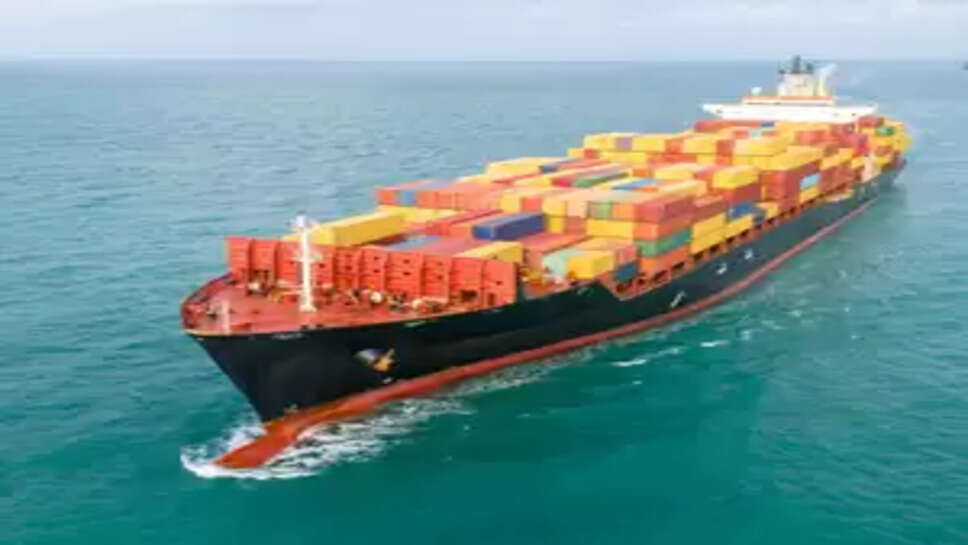Iran–Israel War May Shut Bandar Abbas Port, Spike Air Freight Costs: Exporters Warn Indian Government

As geopolitical tensions between Iran and Israel continue to escalate into a possible all-out conflict, Indian exporters are sounding the alarm over the potentially crippling impact on international trade routes—most notably the critical Bandar Abbas port in southern Iran. Exporters have expressed concerns to the Indian government that the war could effectively close the Strait of Hormuz, disrupt container movement from Iran, and significantly push up air freight rates, affecting a wide range of industries from pharmaceuticals to perishable goods.
Bandar Abbas: A Strategic Link for Indian Exporters
Bandar Abbas, located on the strategic Strait of Hormuz, serves as a key maritime conduit for Indian exporters, especially those dealing with Central Asian and CIS (Commonwealth of Independent States) countries. It is a major transshipment hub that enables Indian goods to reach landlocked regions through Iran’s extensive road and rail networks. For many medium and small enterprises, this route is not just cost-effective, but also time-saving compared to northern transit routes via Europe or China.
Currently, the port handles a considerable volume of Indian cargo, especially from western ports such as Nhava Sheva (JNPT) and Mundra. Trade through this route has grown steadily over the past few years, with sectors like engineering goods, basmati rice, auto components, textiles, and chemicals forming the bulk of shipments.
War Threatens Disruption of Vital Trade Corridor
In recent days, several shipping companies have started to reconsider port calls to Bandar Abbas amid fears of missile strikes, naval blockades, or sanctions. Exporters say that even the anticipation of war has caused delays in cargo movement and disrupted the issuance of Letters of Credit (LCs), with many banks reluctant to finance shipments routed through Iran.
"Bandar Abbas is a crucial node for our shipments to Central Asia and Russia. If it is closed or considered a high-risk zone, it would force us to reroute cargo through far more expensive corridors," said a Mumbai-based logistics company handling freight for multiple exporters.
Adding to the complications, insurance premiums for shipments moving through the Strait of Hormuz have already increased, and any actual military escalation could further spike these costs.
Air Freight Rates Already Rising
As uncertainty looms over sea routes, exporters are turning to air freight as an alternative—but this is not without its own set of challenges. Over the last week, air cargo rates from India to Europe and Central Asia have risen by 15–20%, and industry analysts warn that prices could double if a full-scale war breaks out.
The air cargo sector, which already struggles with limited belly space in passenger flights and high fuel prices, may not be equipped to handle a surge in demand. Several freight forwarders have reported capacity shortages, especially for time-sensitive shipments like pharmaceuticals, organic chemicals, and fresh produce.
"We are already seeing upward movement in freight prices, and if hostilities intensify, it will hit small and medium exporters the hardest," said a representative of a Delhi-based freight forwarding agency.
Exporters dealing in high-volume but low-margin products such as apparel, carpets, and ceramic tiles fear that switching to air freight could make them uncompetitive in global markets.
Government Urged to Step In
Multiple export promotion councils and industry associations have written to the Union Ministry of Commerce and Industry urging immediate diplomatic and logistical interventions. The Federation of Indian Export Organisations (FIEO), in particular, has highlighted the risks posed to more than $4 billion worth of annual exports that depend on the Bandar Abbas route directly or indirectly.
FIEO and other bodies have requested the government to:
-
Initiate dialogue with Iran to ensure safe passage for Indian goods;
-
Explore alternative trade routes, such as the International North-South Transport Corridor (INSTC);
-
Offer emergency subsidies for air freight where maritime transport becomes non-viable;
-
Facilitate the availability of insurance and credit support for exporters exposed to conflict zones.
Commerce ministry officials are reportedly assessing the situation and are in talks with Indian missions in Tehran and Tel Aviv to evaluate risks and explore mitigative options.
INSTC: A Possible Alternative?
One alternative that the government is reportedly considering is to push for greater use of the International North-South Transport Corridor, a multi-modal network connecting India to Russia and Central Asia via Iran, Azerbaijan, and the Caspian Sea. However, this route also hinges on Iranian infrastructure, particularly the Chabahar and Bandar Abbas ports, making it vulnerable to the same geopolitical risks.
While Chabahar—developed with Indian assistance—is outside the immediate Strait of Hormuz danger zone, any wider conflict could still affect operations due to Iran’s limited capacity to separate military and civilian logistics during wartime.
Moreover, industry voices caution that the INSTC is still not fully operational or competitive with the conventional Bandar Abbas route in terms of cost and time.
Impact on Supply Chains and Inflation
The impact of a prolonged war could extend beyond export logistics. Higher shipping and air freight costs could translate into increased input costs for Indian manufacturers, especially those relying on imported raw materials from the Middle East or Central Asia.
Additionally, delayed shipments and rising logistics expenses could feed into inflationary pressures domestically, particularly in sectors such as edible oils, fertilizers, and electronics, which have dependencies on West Asian supply chains.
"We must prepare for a double whammy—loss of market share abroad and cost escalation at home," said an exporter of engineering goods based in Gujarat. "If the conflict lingers, it will affect not just trade but the entire economy."
Rupee Volatility Adds to Woes
Currency fluctuations are compounding challenges for exporters. The rupee has shown signs of volatility amid geopolitical instability, making it harder for exporters to predict returns or hedge risks. The widening gap between forward premiums and spot rates is affecting profit margins, especially for contracts priced in euros or U.S. dollars.
Several exporters have appealed to the Reserve Bank of India to enhance forex support and consider emergency measures to ensure liquidity for export-oriented industries.
A Global Ripple Effect
The crisis is not isolated to India. A full-blown Iran–Israel war would disrupt global oil flows through the Strait of Hormuz, through which nearly one-fifth of global oil passes. Energy markets are already reacting nervously, with crude prices ticking upward and analysts forecasting even sharper spikes if shipping lanes are compromised.
Higher fuel prices could send air and sea freight costs soaring globally, affecting supply chains across North America, Europe, and Asia. Given India’s status as a major trade hub for pharmaceuticals, chemicals, textiles, and IT hardware, any disruption could trigger a cascading effect on global inventories and deliveries.
The Need for Rapid Response
With the stakes rising, exporters are urging the Indian government to treat the situation with urgency and foresight. Diplomatic engagement with Iran, trade route diversification, emergency freight subsidies, and financial support measures could help mitigate the worst effects of the crisis.
But time is of the essence. As the region teeters on the brink of war, Indian businesses are staring down the possibility of losing access to a critical trade corridor. A swift and coordinated response could be the difference between temporary disruption and long-term damage to India’s export economy.
